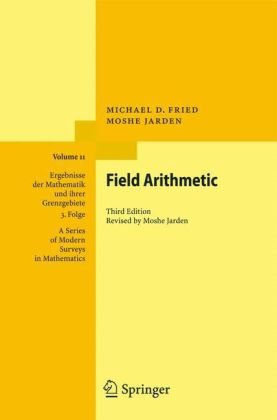

Most ebook files are in PDF format, so you can easily read them using various software such as Foxit Reader or directly on the Google Chrome browser.
Some ebook files are released by publishers in other formats such as .awz, .mobi, .epub, .fb2, etc. You may need to install specific software to read these formats on mobile/PC, such as Calibre.
Please read the tutorial at this link: https://ebookbell.com/faq
We offer FREE conversion to the popular formats you request; however, this may take some time. Therefore, right after payment, please email us, and we will try to provide the service as quickly as possible.
For some exceptional file formats or broken links (if any), please refrain from opening any disputes. Instead, email us first, and we will try to assist within a maximum of 6 hours.
EbookBell Team

5.0
28 reviewsMain subject categories: • Field arithmetic • Algebra • Number theory • Algebraic geometry • Analysis
Field Arithmetic explores Diophantine fields through their absolute Galois groups. This largely self-contained treatment starts with techniques from algebraic geometry, number theory, and profinite groups. Graduate students can effectively learn generalizations of finite field ideas. We use Haar measure on the absolute Galois group to replace counting arguments. New Chebotarev density variants interpret diophantine properties. Here we have the only complete treatment of Galois stratifications, used by Denef and Loeser, et al, to study Chow motives of Diophantine statements.
Progress from the first edition starts by characterizing the finite-field like P(seudo)A(lgebraically)C(losed) fields. We once believed PAC fields were rare. Now we know they include valuable Galois extensions of the rationals that present its absolute Galois group through known groups. PAC fields have projective absolute Galois group. Those that are Hilbertian are characterized by this group being pro-free. These last decade results are tools for studying fields by their relation to those with projective absolute group. There are still mysterious problems to guide a new generation: Is the solvable closure of the rationals PAC; and do projective Hilbertian fields have pro-free absolute Galois group (includes Shafarevich's conjecture)?
The third edition improves the second edition in two ways: First it removes many typos and mathematical inaccuracies that occur in the second edition (in particular in the references). Secondly, the third edition reports on five open problems (out of thirtyfour open problems of the second edition) that have been partially or fully solved since that edition appeared in 2005.